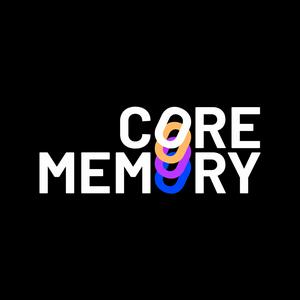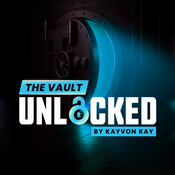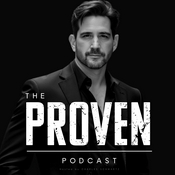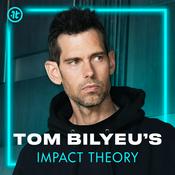Available Episodes
5 of 49
- Attacking Cancer With Code And Winning - EP 48 Jake BecraftJake Becraft was working on mRNA way before it was cool.In fact, Becraft’s advisors at MIT told him trying to develop therapies with mRNA would be a colossal waste of time. But, here we are in 2025, and Becraft has pushed the mRNA technology that gained so much attention during the pandemic in rather incredible new directions.Becraft joins the podcast this week to talk about his company Strand Therapeutics and its programmable mRNA technology. Strand has developed a way to send therapies into the body and have them aim right for diseased cells. Its first clinical trial has focused on melanoma where Strand has been able to treat patients who were deemed incurable with any other medicines.Jake and I met up at Strand’s headquarters in Boston with a double-helix hanging over our heads. We covered Strand’s work, Jake’s background and the future of synthetic biology.We’ll have a video episode coming on Strand and its lab and technology soon on our YouTube channel, which you should be subscribing to because it’s awesome.Our show is sponsored by Brex, the intelligent finance platform. Like thousands of ambitious, innovative companies, we run on Brex so we can spend smarter and move faster. And you can too. Learn more at www.brex.com/corememoryThe podcast is also made possible by E1 Ventures, which backs the most ambitious founders and start-ups. This is a public episode. If you'd like to discuss this with other subscribers or get access to bonus episodes, visit www.corememory.com/subscribe--------1:23:31
- America Has A Steel Start-Up. Yes, Really - EP 47 Laureen MerouehAmerica has a new steel company, which is sort of a weird thing to write in 2025.It’s called Hertha Metals, and it’s based in Houston. It’s also run by a woman named Laureen Meroueh, who is this week’s guest. As far as we can tell, Meroueh stands out as the first female to start and run a steel producer.Meroueh grew up as something of a child prodigy in Florida and went on to earn a PhD in mechanical engineering from MIT. She then invented some of the processes that make Hertha different from traditional steel producers.Hertha relies on natural gas and hydrogen instead of coal to make high-grade steel. Its process is potentially cleaner, simpler and cheaper than the approaches used by the traditional steelmakers that have been around for more than 150 years. The start-up is already producing one ton of steel per day and is now looking to prove that it can make much, much more and compete head-to-head against the major steel players.In this episode, we get into how Hertha’s process works, the steel industry overall, why the U.S. needs this type of technology and how Meroueh ended up as a steel magnate.Our show is sponsored by Brex, the intelligent finance platform. Like thousands of ambitious, innovative companies, we run on Brex so we can spend smarter and move faster. And you can too. Learn more at www.brex.com/corememoryThe podcast is also made possible by E1 Ventures, which backs the most ambitious founders and start-ups. This is a public episode. If you'd like to discuss this with other subscribers or get access to bonus episodes, visit www.corememory.com/subscribe--------1:39:22
- OpenAI's Research Chief On The Soup Wars, Poker And The Next Models - EP 46 Mark ChenOne must not feel sorry for Mark Chen. He gets paid very well to work in one of the most exciting fields imaginable.That said, as OpenAI’s Chief Research Officer, he has the difficult job of picking the company’s research priorities and of dealing with OpenAI’s employees begging him for more, more, more GPUs to power their work. This is a hectic gig, and, if you believe that AI will do all the things that AI companies promise it will do, then an awful lot of pressure and expectation is on Chen’s shoulders.We recently spent almost two hours with Chen talking about his job, his background and his fierce competitive streak. (I’ve seen the man play poker. He takes it very seriously. He’s also proven willing to counter Mark Zuckerberg’s personal soup deliveries to AI researchers in order to court and retain talent.) And, of course, we got into the future of AI.This conversation took place just a couple of days after Google released Gemini 3, and we spent some time on how OpenAI plans to counter this new, powerful model.We think you’ll get to learn a lot more about Chen’s personality and motivations in this episode. Enjoy!Our show is sponsored by Brex, the intelligent finance platform. Like thousands of ambitious, innovative companies, we run on Brex so we can spend smarter and move faster. And you can too. Learn more at www.brex.com/corememoryThe podcast is also made possible by E1 Ventures, which backs the most ambitious founders and start-ups. This is a public episode. If you'd like to discuss this with other subscribers or get access to bonus episodes, visit www.corememory.com/subscribe--------1:38:18
- The Famed Hacker Trying To Find The World's Best Inventors - EP 45 Pablos HolmanPablos Holman has one of the most-watched TED Talks of all time, and that’s sort of the least interesting thing about him.For the past 30 years or so, Holman has been traveling amid the most inventive and eccentric tech circles. He grew up in the wilds of Alaska and turned into a hacker extraordinaire. He helped start the rocket company Blue Origin with Jeff Bezos and sci-fi author Neal Stephenson. And he helped Bill Gates, Nathan Myhrvold, and Edward Jung create an invention factory at Intellectual Ventures.If you like our stories, videos and podcasts, please do subscribe. All of this stuff takes a team to produce, and we could use your support.These days, Holman is running a venture capital firm that scours the world for the biggest ideas from wild-eyed inventors missed by others. He published a book this year that captures some of his thoughts on invention and where our civilization is heading.In this episode, we dive into the book, Holman’s bizarre career and the future of science and research and development. I think you will be surprised and entertained.Our show is sponsored by Brex, the intelligent finance platform. Like thousands of ambitious, innovative companies, we run on Brex so we can spend smarter and move faster. And you can too. Learn more at www.brex.com/corememoryThe podcast is also made possible by E1 Ventures, which backs the most ambitious founders and start-ups. This is a public episode. If you'd like to discuss this with other subscribers or get access to bonus episodes, visit www.corememory.com/subscribe--------1:35:24
- The Open Source AI Model For The West - EP 44 Misha LaskinIn December of 2024, the Chinese start-up DeepSeek shocked the world with the release of an AI model that appeared much cheaper to make and run than those from its American rivals. The company also open sourced its AI, meaning it released the blueprints of its model to the public.Our guest this week is Misha Laskin. His start-up Reflection AI looks to be the prime counterweight to DeepSeek and a host of other open source Chinese models. Laskin argues that open source models can be just as good as the models developed by the likes of OpenAI, Google and Anthropic and that the West needs this to be the case.Reflection has raised $2 billion and is valued at $8 billion, although the figures in AI have become so lofty as to almost feel meaningless at this point. That said, the company was able to raise so much money because of the pedigree of its team with a number of engineers, like Laskin, coming from DeepMind.I have, in full confession, not been paying enough attention to open source models and the ways in which the Chinese models seem to have become the basis for a lot of corporate work in the US. Laskin dug in deep on this topic, and hopefully you’ll feel more up to speed after listening to the episode.You can find the Core Memory podcast on all major platforms and on our YouTube channel. Enjoy!Our show is sponsored by Brex, the intelligent finance platform. Like thousands of ambitious, innovative companies, we run on Brex so we can spend smarter and move faster. And you can too. Learn more at www.brex.com/corememoryThe podcast is also made possible by E1 Ventures, which backs the most ambitious founders and start-ups. This is a public episode. If you'd like to discuss this with other subscribers or get access to bonus episodes, visit www.corememory.com/subscribe--------1:27:18
More Business podcasts
Trending Business podcasts
About Core Memory
Core Memory is a podcast about science and technology hosted by best-selling author and filmmaker Ashlee Vance.
Vance has spent the past two decades chronicling advances in science and tech for publications like The Economist, The New York Times and Bloomberg Businessweek. Along with the stories, he's written best-selling books like Elon Musk’s biography, made an Emmy-nominated tech TV show watched by millions and produced films for HBO and Netflix. The goal has always been to bring the tales of complex technology and compelling people to the public and give them a path into exceptional and unusual worlds they would not normally have a chance to experience. www.corememory.com
Podcast websiteListen to Core Memory, Money Rehab with Nicole Lapin and many other podcasts from around the world with the radio.net app

Get the free radio.net app
- Stations and podcasts to bookmark
- Stream via Wi-Fi or Bluetooth
- Supports Carplay & Android Auto
- Many other app features
Get the free radio.net app
- Stations and podcasts to bookmark
- Stream via Wi-Fi or Bluetooth
- Supports Carplay & Android Auto
- Many other app features


Core Memory
Scan code,
download the app,
start listening.
download the app,
start listening.







































